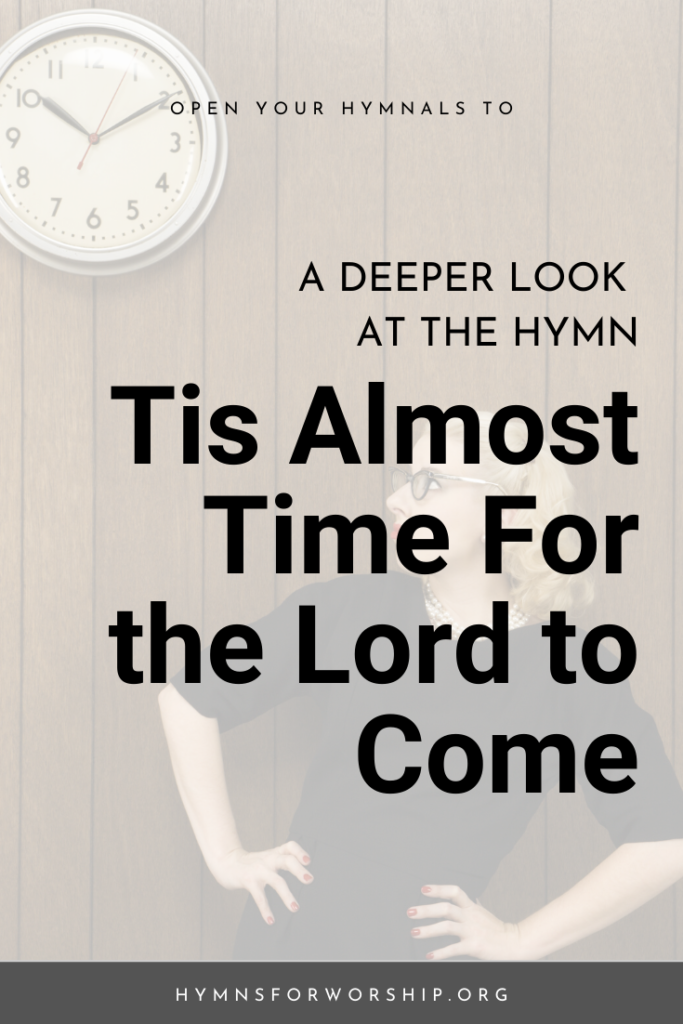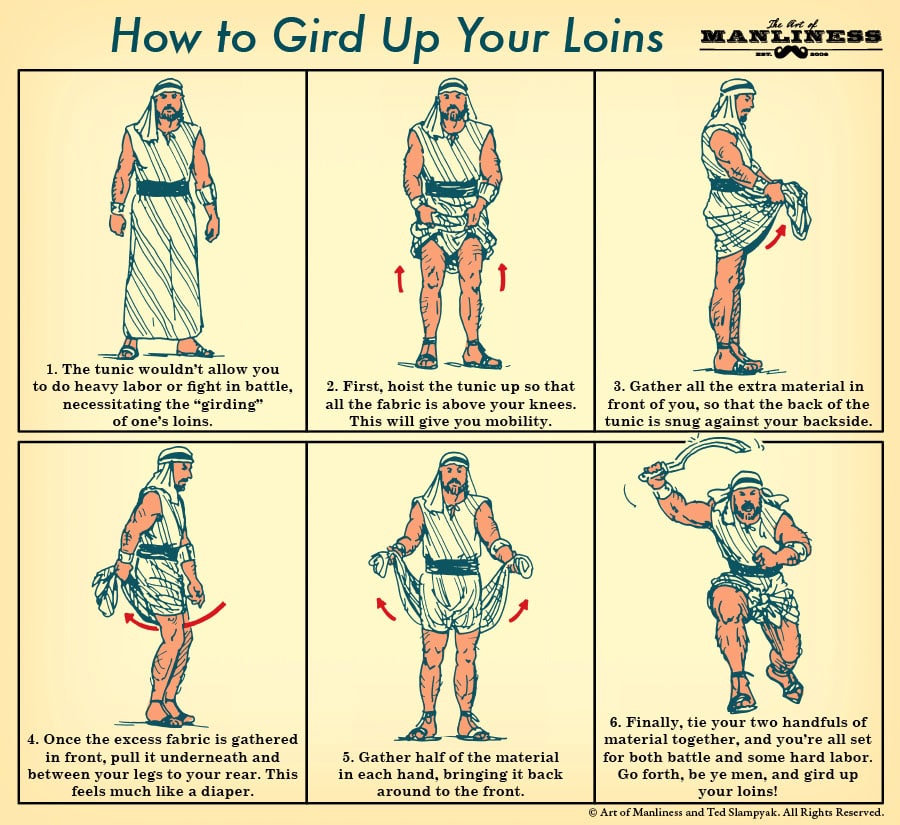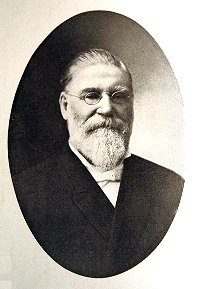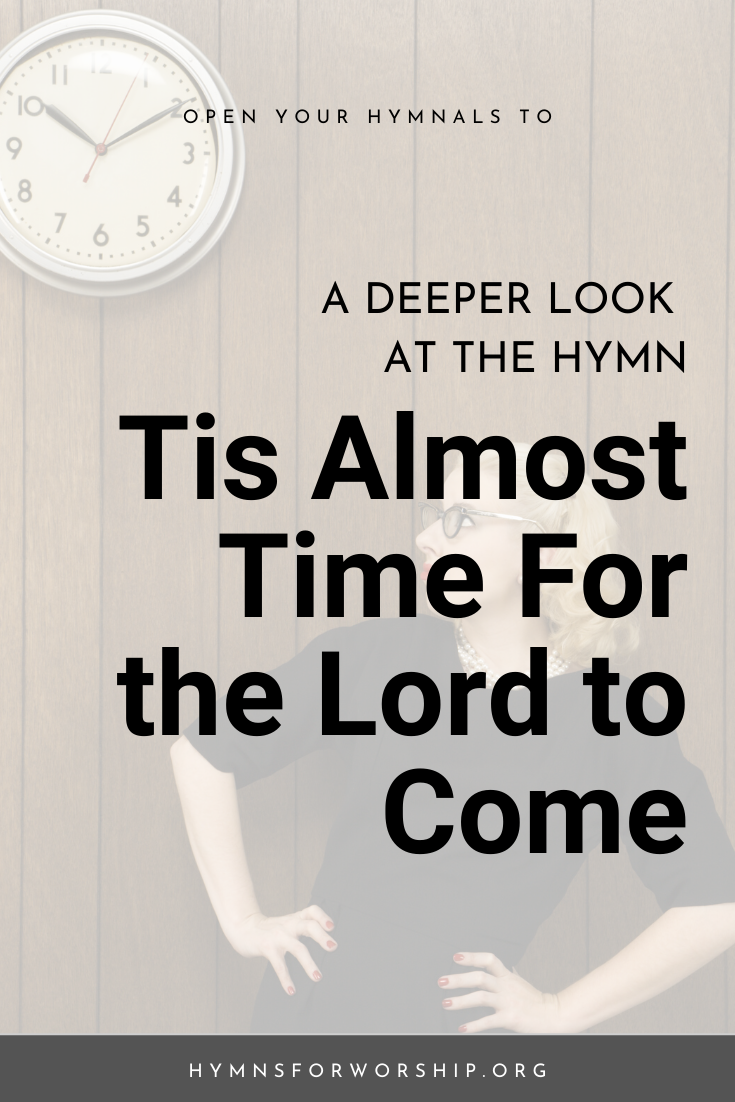Tis Almost Time for the Lord to Come is one of those hymns I used to sing a lot in my childhood. It has a catchy tune and a nice driving rhythm to it. I remember my friends and I would always look forward to sing that pause “Oh…” at the beginning of the refrain, trying to see how long we can hold our breaths before continuing with the rest of the song.

This hymn used to be a well-known hymn among Adventists. Not only because it pertained to the soon coming of Christ but how the stanzas were constructed to reflect certain passages of Scripture that Adventists were very familiar with.
The signs foretold in the sun and moon

Stanza 2 talks about Luke 21:25, where “there shall be signs in the sun, and in the moon…” Mark 13:24-26 elaborates on this further, as to what will precisely happen, in that “The sun shall be darkened, and the moon shall not give her light…” Any Adventist who knows their history would also know that these signs have already been fulfilled.
The signs foretold in the sun and moon, In earth and sea and sky, Aloud proclaim to all mankind, The coming of the Master draweth nigh.
May 19, 1780 was proclaimed as “The Dark Day” in history. It was a day of intense darkness that almost paralleled the times of Moses during the falling of plagues in Egypt. It was so dark that people had to light candles to be able to continue with their business. Even the poet John Greenleaf Whittier penned a poem to commemorate this happenstance.
Shortly after the dark day, the moon rose to the full. Eyewitness accounts attested that while the moon was full, it did not give much light — but rather had a reddish appearance, which resembled the color of blood.
Recommended Reading: Great Controversy, “Heralds of the Morning”, Chapter 17, pp. 306-308.
With girded loins and burning lamps
Stanza 3 is a reflection on Luke 12:35-40 and Matthew 25:1-13. While there is a lot that can be said, Sederquist masterfully used words that painted the picture for us of the waiting virgins, a symbol for us, the waiting church.
“It must be time for the waiting church to cast her pride away, With girded loins and burning lamps, To look for the breaking of the day.“
What does it mean to have ‘girded loins’? Literally speaking, it is to ‘tighten your pants’. Exodus 12:11 and 1 Kings 18:46 give us a better picture that it was something men did so they can move better — especially when it requires more strength and action.

But we all know that in context, we are to apply this phrase symbolically. 1 Peter 1:13 talks about girding the loins of the mind. Isaiah 11:5 refers to righteousness as the girdle of the loins. And Ephesians 6:14 commands us to stand and let our loins be girded with truth.
How about the burning lamps?
The Bible clearly says that the lamp symbolizes God’s word (Psalm 119:105). How do you keep the lamp burning? By keeping it trimmed with oil. This was something that the wise virgins were faithful to — they kept their lamps trimmed. Ellen White explained how the wise virgins kept their lamps trimmed:
In the fear of God they had studied the Scriptures to learn the truth, and had earnestly sought for purity of heart and life. These had a personal experience, a faith in God and in His word, which could not be overthrown by disappointment and delay.
Great Controversy, 393.4
In other words, we have responsibilities, as a waiting church: to gird ourselves with truth and righteousness by studying God’s word, by keeping our hearts and lives pure, and by having a personal experience with God.
Recommended Reading: Great Controversy, “Prophecies Fulfilled,” Chapter 22.
Go quickly out in the streets and lanes
The fourth stanza of this hymn borrows its idea from the parable found in Luke 14:16-24. It is about the story of a certain man who made a great banquet and sent his messengers to invite his friends, brethren, kinsmen, and rich neighbours (Luke 14:12). But all of them were indifferent to the invitation, and even made excuses why they cannot come.
The man was greatly insulted and angry by his friends’ attitude towards his invitation. And so what he tells his messengers after is what Sederquist, almost verbatim, included in this stanza:
Go quickly out in the streets and lanes And in the broad highway, And call the maimed, the halt, and blind, To be ready for the breaking of the day.
This invitation to the supper represents the blessings that one can get when he accepts the gospel message. Sadly, the attitude by which many who hears about it is indifference. Many people give excuses for refusing it. But the beauty of the gospel truth is that nobody is too low, too poor, too wretched for God’s love.
Omitted stanza
There must be those in the field of sin, Far from the fold astray. Who once were happy in Jesus’ love, And looking for the breaking of the day.
Recommended Reading: Christ Object Lessons, “Go Into the the Highways and Hedges,” Chapter 18.
At the breaking of the day
If there is a subliminal theme to the whole song, it would be the repetitive reference to “the breaking of the day.” This phrase is actually taken from Jacob’s experience at Penuel when he wrestled with the Angel (Gen. 32:24).
As a perfect metaphor to Christ’s soon return, the breaking of the day, or the dawn applies to the end of the earth’s long night of sin which will break into a glorious dawn of the second advent of Christ.
Taking things into a deeper context, this very experience of Jacob during that night, is often referred to as the ’Time of Trouble.’ A time in which Ellen White describes wherein,
…if the people of God had unconfessed sins to appear before them while tortured with fear and anguish, they would be overwhelmed; despair would cut off their faith, and they could not have confidence to plead with God for deliverance. But while they have a deep sense of their unworthiness, they have no concealed wrongs to reveal. Their sins have gone beforehand to judgment and have been blotted out, and they cannot bring them to remembrance….Those who delay a preparation for the day of God cannot obtain it in the time of trouble or at any subsequent time. The case of all such is hopeless.”
Great Controversy, 620.1
This is the time when Christ had already ceased to be man’s mediator, yet as the experience of Jacob showed, it was by surrendering himself and confiding his faith in Christ that he was saved.
Recommended Reading: Patriarchs and Prophets, “The Night of Wrestling,” Chapter 18. Great Controversy, “The Time of Trouble,” Chapter 39.
G.W. Sederquist

George Washington Sederquist was born in Lower Granville, Nova Scotia on September 10, 1838. He was baptised into the Baptist faith when he was 25 years old, and was a member of this church for a few years.
At 33 years old, Sederquist moved to the United States and set up his home in Lynn, Massachusetts. It was here that he heard about the messages of premillenialism. Finally in 1902, he accepted the Adventist faith, that is the Sunday-keeping Adventism.
The Advent Christian church trace their roots all the way to William Miller and his discovery of the interpretation of Daniel 8:14. After October 22, 1844, the Millerites split into two camps.
The smaller group reckoned their numbers to about 50. This number included Ellen Harmon, James White, Joseph Bates and many of the Seventh-day Adventist pioneers that we know. The larger group of Adventists was approximately 30,000. They finally organised themselves in 1854 at Albany, New York and established themselves as the Advent Christian denomination. In the writings of Ellen White, she would often refer to them as the ‘first-day Adventists’ or the ‘nominal Adventists.’
Recommended Reading: Preface of Early Writings, “Two Groups of Adventists,” xvii, par. 2.
Sederquist was later known to be one of the Advent Christian church’s strongest preacher and evangelist. He traveled from coast to coast and became a pastor in several churches in Boston, Salem, Springfield and Haverhill.
He was also a hymn writer and composer, having written about 60 hymns. ’Tis Almost Time for the Lord to Come is his most popular one, and is the only one from his works to be included in the SDA Hymnal.
He died in 1921, at the age of 82.
Recommended Reading: A list of G.W. Sederquist’s hymns
Like this article? Share it!


